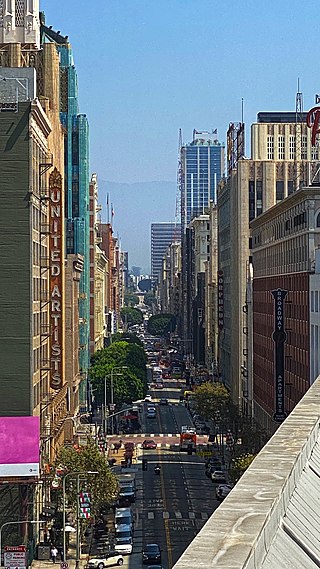
Broadway, until 1890 Fort Street, is a thoroughfare in Los Angeles County, California, United States. The portion of Broadway from 3rd to 9th streets, in the Historic Core of Downtown Los Angeles, was the city's main commercial street from the 1910s until World War II, and is the location of the Broadway Theater and Commercial District, the first and largest historic theater district listed on the National Register of Historic Places (NRHP). With twelve movie palaces located along a six-block stretch of Broadway, it is the only large concentration of movie palaces left in the United States.

George Edwin Bergstrom was an American architect who designed The Pentagon in Arlington County, Virginia.
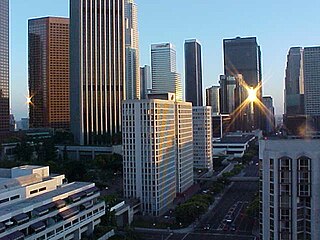
The Financial District is the central business district of Los Angeles It is bounded by the Harbor Freeway to the west, First Street to the north, Main and Hill Streets to the east, and Olympic Boulevard and 9th Street to the south. It is south of the Bunker Hill district, west of the Historic Core, north of South Park and east of the Harbor Freeway and Central City West. Like Bunker Hill, the Financial District is home to corporate office skyscrapers, hotels and related services as well as banks, law firms, and real estate companies. However, unlike Bunker Hill which was razed and now consists of buildings constructed since the 1960s, it also contains large buildings from the early 20th century, particularly along Seventh Street, once the city's upscale shopping street; the area also includes the 7th and Flower area at the center of the regional Metro rail system, restaurants, bars, and two urban malls.
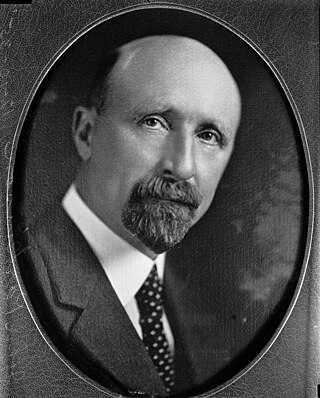
John and Donald Parkinson were a father-and-son architectural firm operating in the Los Angeles area in the early 20th century. They designed and built many of the city's iconic buildings, including Grand Central Market, the Memorial Coliseum, and City Hall.

Sumner P. Hunt was an architect in Los Angeles from 1888 to the 1930s. On January 21, 1892, he married Mary Hancock Chapman, January 21, 1892. They had a daughter Louise Hunt.
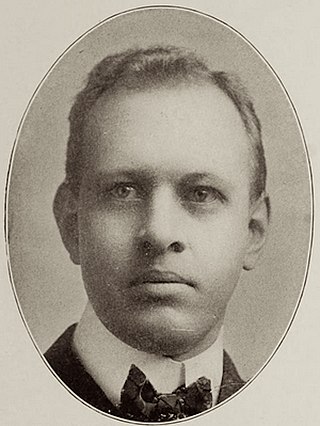
William James Dodd (1862–1930) was an American architect and designer who worked mainly in Louisville, Kentucky from 1886 through the end of 1912 and in Los Angeles, California from early 1913 until his death. Dodd rose from the so-called First Chicago School of architecture, though of greater influence for his mature designs was the classical aesthetic of the Beaux-Arts style ascendant after the Chicago World's Columbian Exposition of 1893. His design work also included functional and decorative architectural glass and ceramics, furniture, home appliances, and literary illustration.

The Million Dollar Theatre at 307 S. Broadway in Downtown Los Angeles is one of the first movie palaces built in the United States. It opened in 1917 with the premiere of William S. Hart's The Silent Man. It's the northernmost of the collection of historical movie palaces in the Broadway Theater District and stands directly across from the landmark Bradbury Building. The theater is listed in the National Register of Historic Places.

Clinton and Russell was a well-known architectural firm founded in 1894 in New York City, United States. The firm was responsible for several New York City buildings, including some in Lower Manhattan.

The Broadway Theater District in the Historic Core of Downtown Los Angeles is the first and largest historic theater district listed on the National Register of Historic Places (NRHP). With twelve movie palaces located along a six-block stretch of Broadway, it is the only large concentration of movie palaces left in the United States. The same six-block stretch of Broadway, and an adjacent section of Seventh Street, was also the city's retail hub for the first half of the twentieth century, lined with large and small department stores and specialty stores.
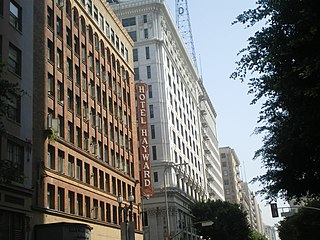
Spring Street in Los Angeles is one of the oldest streets in the city. Along Spring Street in Downtown Los Angeles, from just north of Fourth Street to just south of Seventh Street is the NRHP-listed Spring Street Financial District, nicknamed Wall Street of the West, lined with Beaux Arts buildings and currently experiencing gentrification. This section forms part of the Historic Core district of Downtown, together with portions of Hill, Broadway, Main and Los Angeles streets.

Alfred Faist Rosenheim, F.A.I.A. was an architect born in St. Louis, Missouri and a Fellow of the American Institute of Architects. He was one of the leading architects in Los Angeles, California in the early part of the 20th century. His major works include the Hellman Building, the Hamburger Department Store, Second Church of Christ Scientist and the Eugene W. Britt House.
Main Street is a major north–south thoroughfare in Los Angeles, California. It serves as the east–west postal divider for the city and the county as well.

Elmer H. Fisher was an architect best known for his work during the rebuilding of the American city of Seattle after it was devastated by fire in 1889. He began his career as a carpenter and migrated from Massachusetts to the Pacific Northwest, where he practiced architecture from 1886 to 1891. After his reputation was damaged by litigation and personal scandal in Seattle, he relocated to Los Angeles in 1893, where he only had modest success as an architect before returning to carpentry, dying around 1905 with his final years almost as mysterious as his early years; the details of his death and his burial location remain unknown. His commercial building designs played a major role in reshaping Seattle architecture in the late 19th century and many still survive as part of the Pioneer Square Historic District.

Robert Brown Young was a Canadian-born architect who designed numerous buildings in California, particularly in downtown Los Angeles.

The architecture of Seattle, Washington, the largest city in the Pacific Northwest region of the U.S., features elements that predate the arrival of the area's first settlers of European ancestry in the mid-19th century, and has reflected and influenced numerous architectural styles over time. As of the early 21st century, a major construction boom continues to redefine the city's downtown area as well as neighborhoods such as Capitol Hill, Ballard and, perhaps most dramatically, South Lake Union.
Saunders and Lawton was an architectural firm consisting of partners George Willis Lawton and Charles Willard Saunders active from 1898 until 1915 in Seattle, Washington. Other architects at the firm included Herman A. Moldenhour, Paul David Richardson, and J. Charles Stanley. Following Saunders' retirement, Moldenhour would take his place as partner in the firm under the name Lawton & Moldenhour, who would have moderate success throughout the 1920s.
James Flood Walker was an architect in the United States who worked in Los Angeles, Seattle, Boise, and San Antonio. Some of Walker's work is listed on the National Register of Historic Places, including the Dr. Frank R. Burroughs House and the St. Anthony Hotel. Other buildings designed by Walker are part of National Register historic districts, including the West End Theatre and the Lawrence Building listed in the Downtown Santa Ana Historic Districts. And Walker designed the John T. Morrison House, listed in the State Street Historic District in Boise.
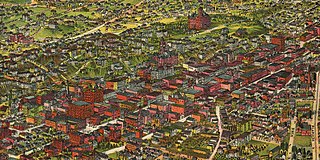
The late-Victorian-era Downtown of Los Angeles in 1880 was centered at the southern end of the Los Angeles Plaza area, and over the next two decades, it extended south and west along Main Street, Spring Street, and Broadway towards Third Street. Most of the 19th-century buildings no longer exist, surviving only in the Plaza area or south of Second Street. The rest were demolished to make way for the Civic Center district with City Hall, numerous courthouses, and other municipal, county, state and federal buildings, and Times Mirror Square. This article covers that area, between the Plaza, 3rd St., Los Angeles St., and Broadway, during the period 1880 through the period of demolition (1920s–1950s).

The Central Building is a historic building at 810 3rd Avenue in downtown Seattle, in the U.S. state of Washington.

Judson-Rives Building, originally the Broadway Central Building, also known as The Judson, is a historic ten story high-rise located at 424 S. Broadway in the Broadway Theater District in the historic core of downtown Los Angeles.

















